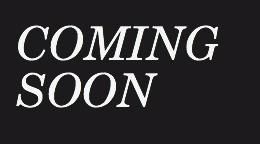Difference between revisions of "A Mosaic of Mosaics"
From Londonhua WIKI
(→Section 1: Background) |
|||
| Line 16: | Line 16: | ||
=Section 1: Background= | =Section 1: Background= | ||
| − | |||
| − | |||
==Materials== | ==Materials== | ||
===Tiling=== | ===Tiling=== | ||
Revision as of 11:46, 30 May 2017
A Mosaic of Mosaics
Contents
Abstract
The paragraph should give a three to five sentence abstract about your entire London HUA experience including 1) a summary of the aims of your project, 2) your prior experience with humanities and arts courses and disciplines, and 3) your major takeaways from the experience. This can and should be very similar to the paragraph you use to summarize this milestone on your Profile Page. It should contain your main Objective, so be sure to clearly state a one-sentence statement that summarizes your main objective for this milestone such as "a comparison of the text of Medieval English choral music to that of the Baroque" or it may be a question such as "to what extent did religion influence Christopher Wren's sense of design?"
Introduction
I suggest you save this section for last. Describe the essence of this project. Cover what the project is and who cares in the first two sentences. Then cover what others have done like it, how your project is different. Discuss the extent to which your strategy for completing this project was new to you, or an extension of previous HUA experiences.
As you continue to think about your project milestones, reread the "Goals" narrative on defining project milestones from the HU2900 syllabus. Remember: the idea is to have equip your milestone with a really solid background and then some sort of "thing that you do". You'll need to add in some narrative to describe why you did the "thing that you did", which you'd probably want to do anyway. You can make it easy for your advisors to give you a high grade by ensuring that your project milestone work reflects careful, considerate, and comprehensive thought and effort in terms of your background review, and insightful, cumulative, and methodical approaches toward the creative components of your project milestone deliverables.
Section 1: Background
Materials
Tiling
This is the most important portion of the mosaic, as it is the most visible part of the mosaic. The oldest known mosaics are created from smooth pebbles of varying sizes, but this limits the precision of the artist to the available stones; pebble mosaics were popular with the Greeks and many of their mosaics are made from pebbles.[1] Eventually the Romans popularized tesserae, the style of mosaic made of individual square cut pieces of stone and shell.[2] The tesserae can be made of a variety of materials and have been. The Byzantine Empire is known to use smalti, a type of enameled glass with pure colors, a uneven texture, and it reflects light very well. A separate form of smalti is gold smalti, which consists of gold sandwiched between two glass plates, it can also have many different textures, colors, and levels of reflective strength. Another material is Venetian (Vitreous) glass, which has less intense colors than smalti and a constantly smooth surface on one side. The Venetian glass is often used for more mundane works such as pools and bathrooms than the Byzantine smalti. Ceramic tile is great for outdoor use, for when it is glazed it is incredibly weather resistant, and the tile comes in a variety of colors and can be made with specialized designed within the tiles. Stone was a popular choice of the Romans and is more durable than other materials and it can have natural variance within the tiles. A more modern tile choice would be broken chine, picassiette. This style is unlike most tesserae because it is not often in a regular shape and size.
Adhesive
Techniques
Section 2: Deliverable
In this section, provide your contribution, creative element, assessment, or observation with regard to your background research. This could be a new derivative work based on previous research, or some parallel to other events. In this section, describe the relationship between your background review and your deliverable; make the connection between the two clear.
A Modern Mosaic

Here will be my created mosaic and a gallery of the images I used to create the mosaic.
About the Mosaic
This will describe the style of the mosaic that I have created and how I have used modern techniques and technology to emulate the creation of mosaics.
Conclusion
In this section, provide a summary or recap of your work, as well as potential areas of further inquiry (for yourself, future students, or other researchers).
External Links
If appropriate, add an external links section
